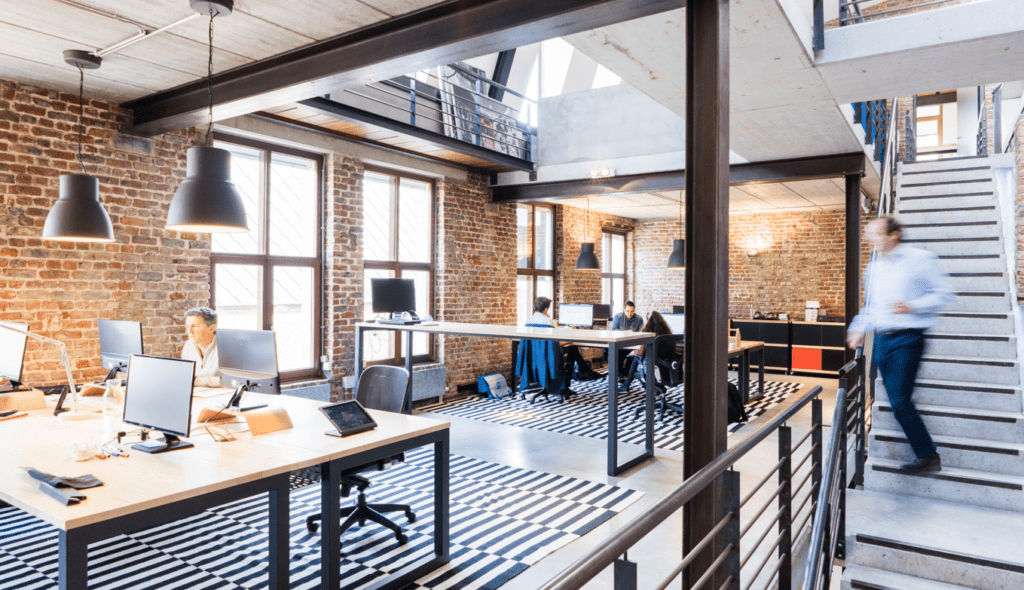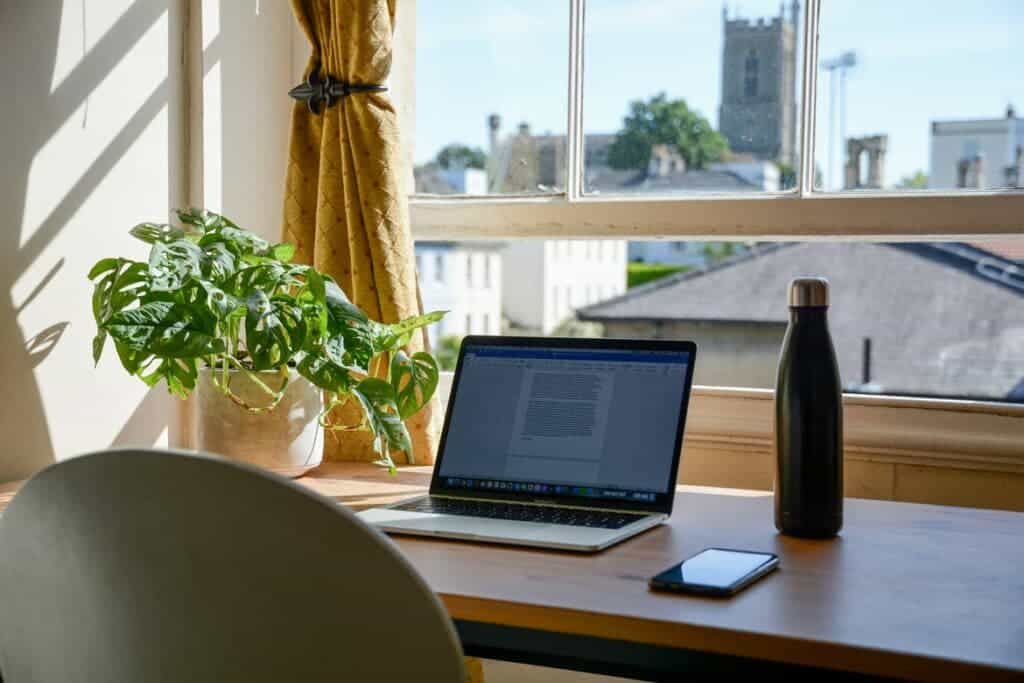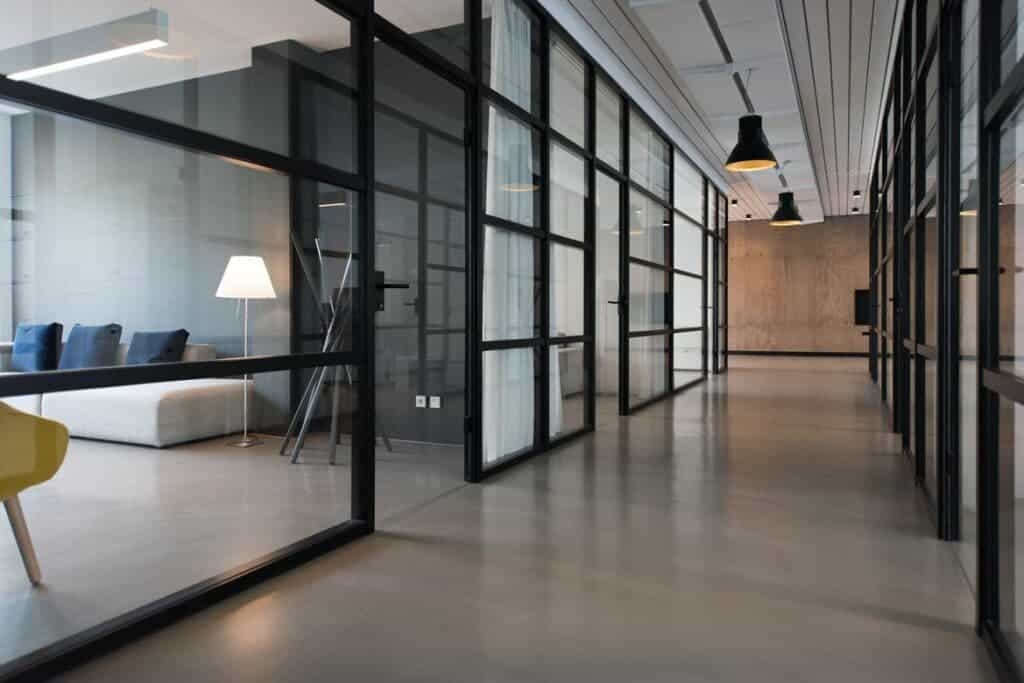Taking down walls makes office cheaper, but it also made them perfect spreaders for viruses and bacteria. A flood of changes promises to bring back those walls — or rather, take a bite out of the office itself.

Viral transmission
It was supposed to be the ‘better’ way, a design that would foster collaboration, creativity, and cooperation among teams. Companies loved it, and the open plan office became the default of many corporations. However, it wasn’t just ideas and thoughts that were easily shared, but also pathogens.
A decade ago, researchers in Arizona conducted a study to see just how fast a virus can spread inside an average office space. They placed a nonpathogenic virus on the door to an open plan office with 80 employees. In only 4 hours, over half of the commonly touched surfaces became contaminated. By the end of the day, virtually the entire office (as well as the bathrooms, doors, and breakroom) were contaminated.
“Behaviors in the workplace contribute to the spread of human viruses via direct contact between hands, contaminated surfaces and the mouth, eyes, and/or nose,” the researchers conclude.
As it turns out, while creativity and cooperation may be hard to quantify, viral spread was not, and open plan offices were more likely to make people sick. A recent study found that people working in this type of office were more likely to take sick days off.
When the COVID-19 pandemic came, the viral transmission hazards of offices confirmed, and open offices were linked to viral transmission. Droplets from a single sneeze can travel several meters, contaminating surfaces for days; even if carefully cleaned, the open office was bound to be less safe than more isolated types of offices.
Then, after people increasingly started working from home last year, returning to work in an open plan office simply seemed unacceptable to most. Many workplaces introduced layout changes including buffer zones and plastic screens intended to reduce the risk of viral transmission, up to the point where there was even a plexiglass shortage.
But this created the illusion of safety rather than actual safety, and people weren’t too keen to return to open spaces — and not just because of the pandemic.
A growing list of grievances
The open plan office, it turns out, had it coming from a long time ago.
Systematic surveys showed that the effects of open-plan offices were not always as positive as purported. Many workers complained about high levels of noise which was hampering productivity and causing stress and higher blood pressure in workers. Many would scurry on to quiet rooms, and it was not uncommon for open offices to actually decrease face-to-face conversations — in the noise and the crowd, direct communication ironically became rarer. In one 2018 study, face-to-face communication was found to decline by up to 70% due to the open office, while electronic communication increased as employees began to “socially withdraw”. Another 2018 study found that employees were aware of the viral transmission risks associated with open spaces, and the fear of infection triggered significant stress. Workers also reported feeling more distracted in open spaces.
Furthermore, the open space takes away what little privacy employees have. It’s hard to hide a cluttered desk in an open space, and it’s likely that everyone around will know what you’re eating — and when. If your job entails phone conversation, that’s also a problem: one study found that employees were less likely to share honest opinions on phone calls while in an open space, due to fears that their co-workers may hear them.
Indeed, the open plan office, the lovechild of so many corporations, was in trouble way before the pandemic.
For all the advantages it offered, like easier office logistics and breaking up silo working, open spaces seemed to cause a fair bit of trouble. The thing is, even though many disliked open spaces, they didn’t have much of a say in the matter. At least, until recently.
The Great Resignation and working from home

Among the many unexpected consequences of the pandemic is a phenomenon people are starting to call The Great Resignation. Basically, the world is experiencing an unexpected exodus of workers. A whopping 4 million Americans a month are quitting their jobs, and workers in other parts of the world are echoing similar trends, sending shockwaves across the entire market.
It’s hard to say why this is happening. A part of it can be traced to economic initiatives meant to tackle the effects of the pandemic, but that’s just the tip of the iceberg. A lot of people are feeling burned out, want a better life balance, or are just looking for better or more meaningful jobs. To add even more fuel to this fire, plenty of workers have become accustomed to the advantages of working from home and are prepared to quit their jobs if they’re not given the option of working from home.
“What will it take to encourage much more widespread reliance on working at home for at least part of each week?” asked Frank Schiff, the chief economist of the US Committee for Economic Development, in The Washington Post in 1979. Now, we know: a pandemic and a great wave of resignations.
Basically, the pandemic has shown that in a great number of cases, we can in fact work from home — despite what some employers would have you believe. A whopping 37 percent of U.S. jobs could potentially be done remotely, and this spells trouble for all offices, not just open ones.
Indeed, for many jobs, the technology of working from home is already easily accessible. It was the culture of the workplace that was keeping people inside the workplace. But now, that’s all been blown open.
The clock is ticking, but change is unlikely to be definitive

From the very start, the idea behind open plan offices was flexibility and freedom; but now, many people want a different type of flexibility and freedom. In the short term, the pandemic virtually stopped the usage of such offices, but in the long run, it triggered changes that will likely lead to their downfall.
However, this doesn’t mean that the concept will become obsolete or go away — far from it. But the idea that the open plan office is the space of the future (as some companies were keen to believe) seems bound to fail. There is still a place for these offices in some companies, in some instances, but it’s not a panacea or a universally desirable solution; the open plan office is likely to become a niche rather than a go-to option.
Of course, offices as a whole will likely change and clever design changes may yet salvage open spaces or help convert them into something more palatable. Truth be told, we’re not sure what type of offices will be desirable, or how the idea of the office will morph in this extremely volatile period.
Ultimately, the cascade of changes triggered by the pandemic is far from over — it’s just beginning. We’re just starting to see their effects, who knows what will happen next?






